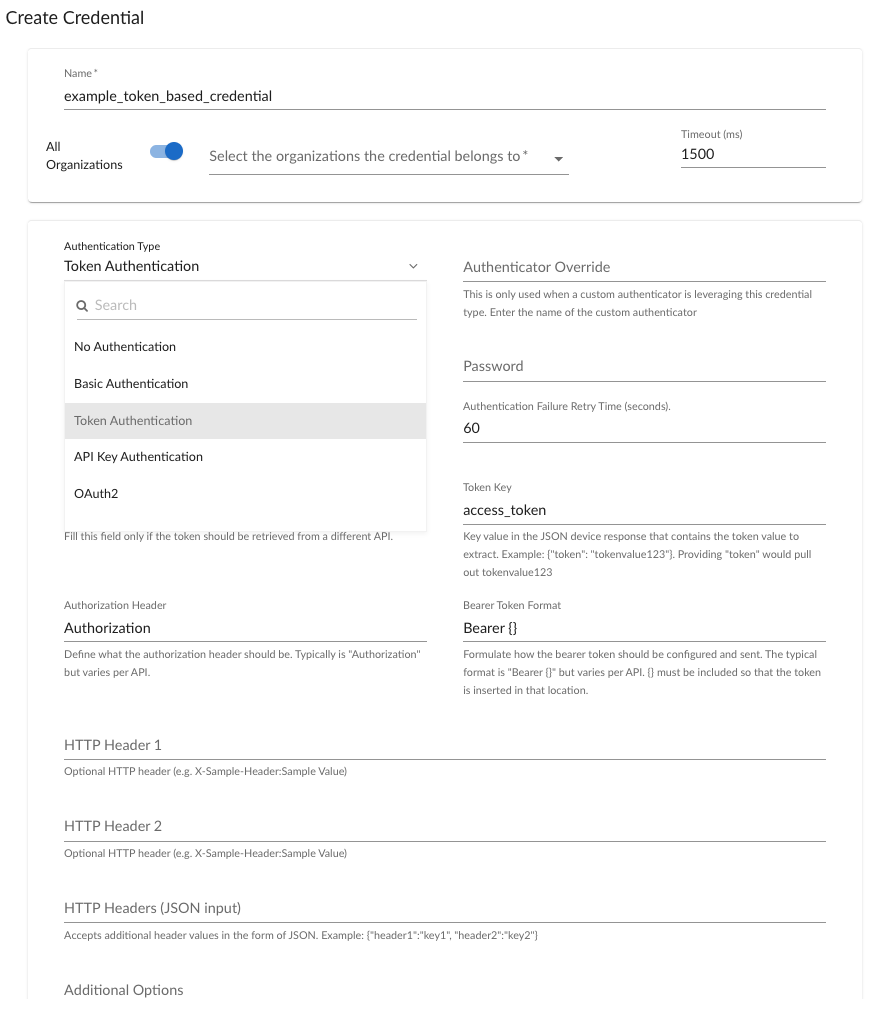Token Based Authentication
The Token Authentication, also known as Token Bearer, method uses an
additional header when passing the request for authentication. This
token is dynamically generated from the Token Retrieval Endpoint.
To use Token Authentication you must select Token Authentication as the value for the Authentication Type dropdown.

The required fields to utilize Token Authentication are as follows:
Username
This field provides the username when requesting the token from
Token Retrieval Endpoint. This field is optional.Password
This field provides the password when requesting the token from
Token Retrieval Endpoint. This field is optional.Token Retrieval Endpoint
This field provides the URL for generating the token that is used in the data request. This field is required.
Authorization Header
This field describes the name of the header to be sent. Default:
Authorization. This field is optional.Bearer Token Format
This field describes how the content should be sent. The format allows for a single substitution for the token. This substitution occurs when specifying
{}in the format. For example, if you wanted to useBearer <token>you would inputBearer {}. Default:{}. This field is required.Token Key
This field states the key where the token exists in the returned JSON dictionary. This field is required.
Authentication Failure Retry Time
This field identifies the number of seconds the authenticator must wait before retrying the authentication upon failure. Default:
60. This field is optional.Token Refresh Implementation
This field allows the selection of the token refreshing strategy. There are two options Static and Dynamic. Default: Dynamic.
Dynamic allows the user to specify the field
Expiry Time Key. This field is used when retrieving the token’s time-to-live from the authentication response. The next authentication request will occur when the expires time is within two collection polling cycles. For example, if a Dynamic Application has a polling frequency of 5 minutes. Then a new token will be fetched when the saved token’s expiration time is less than 10 minutes.Static allows the user to specify a recurring time to refresh their token (in seconds).
Example
You must make a request to a web server (resource server) that
requires a token from another web server (token server). The
resource server expects the header Auth: CoolBeans <token>.
The token server generates tokens at https://token.info
with the credentials my_user / password4321 and returns the
following format:
{
"token": "<the_token_to_use>",
"expires": "900s"
}
To configure Token Authentication, the following fields are required:
Username:
my_userPassword:
password4321Token Retrieval Endpoint:
https://token.infoToken Key:
tokenAuthorization Header:
AuthBearer Token Format:
CoolBeans {}